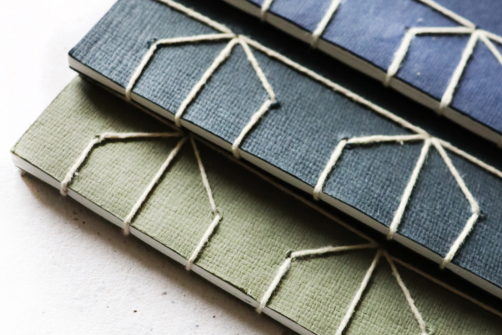How To: Monoprint
31st Jan 2024
Just like all printmaking techniques monoprinting is all about experimentation. As the name suggests ‘Mono’ print very much refers to ‘one-offs’ rather than duplicates or multiples experienced through other printmaking methods. There are many ways to make a monoprint - the following two methods are a useful start to get you underway when using a piece of acetate as your ground:
Equipment
- Clear Acetate or any smooth and shiny surface
- Artway Inking Tray - to contain the ink for rolling ink
- Artway Brayer Roller - for applying ink to surfaces
- Artway Hand Baren - for applying pressure to back of prints
- Paper for prints - like Artway Flat White Multi-Arte 250gsm recycled paper
The Artway Printmaking kit contains everything you would need for this technique plus more!
Process
ADDITIVE
- Ink the tray - apply a good layer of ink across the acetate surface


- Make your mark - using a blunt instrument (quill/pencil/stick) draw patterns, shapes and designs directly across the inked acetate surface. Textures can also be added by impressing materials (leaves, fabrics, net, lace etc.) to the surface before removing them to reveal their properties
REMEMBER to work quickly - the open time (before the ink starts to dry) is limited requiring a degree of haste

- Take a print - carefully place a piece of paper on top of your acetate sheet and, using the hand baren, apply consistent pressure to the back of the print. Work in a circular motion from the middle of the paper outwards for best results. Peel away the paper to reveal your print.


- Re-ink and repeat the process - experiment with other found materials to see what happens
SUBTRACTIVE
- Ink the tray - apply a good layer of ink across the acetate surface


- Cover the acetate with your paper - with an implement of your choosing (pencil/pen/finger etc.) apply a design to the back of the paper - where you draw will imprint from one surface to the other. REMEMBER not to inadvertently add any pressure where it’s not required as this will also be transferred to the print


- Peel away the paper - pick up a corner of the paper and in one smooth motion peel away from the design taking care not to smudge or drag it as you go. Allow to dry


- Re-ink and repeat the process - try other drawing materials to see what difference they make
TIP - most non-absorbent flat/flatish surfaces will work as the ground for monoprinting (glass, tabletops, plastic bags etc.) - the only restriction is then the size of paper you use!

Mastered lino printing, why don't you try out other relief printing techniques. You can follow along with our instructions on lino printing or how to make a collagraph.

